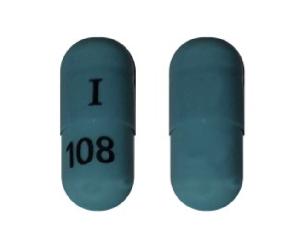Atomoxetine Dosage
Medically reviewed by Drugs.com. Last updated on Apr 18, 2024.
Applies to the following strengths: 10 mg; 25 mg; 40 mg; 18 mg; 60 mg; 80 mg; 100 mg
Usual Adult Dose for:
Usual Pediatric Dose for:
Additional dosage information:
Usual Adult Dose for Attention Deficit Disorder
- Initial Dose: 40 mg/day orally.
- Maintenance Dose: Increase dose to 80 mg/day orally after a minimum of 3 days at the initial dose.
- Maximum Dose: After 2 to 4 additional weeks, the dose may be increased up to 100 mg/day in patients who have not achieved an optimal response.
Comments: Take dose once a day in the morning OR as evenly divided doses in the morning and late afternoon/early evening.
Use: Treatment of Attention Deficit Hyperactivity Disorder (ADHD).
Usual Pediatric Dose for Attention Deficit Disorder
70 kg or Less:
- Initial Dose: 0.5 mg/kg/day orally.
- Maintenance dose: Increase dose to 1.2 mg/kg/day after a minimum of 3 days at the initial dose.
- Maximum dose: 1.4 mg/kg/day or 100 mg/day, whichever is less.
Over 70 kg:
- Initial Dose: 40 mg/day orally.
- Maintenance dose: Increase dose to 80 mg/day after a minimum of 3 days at the initial dose.
- Maximum dose: After 2 to 4 additional weeks, the dose may be increased up to 100 mg/day in patients who have not achieved an optimal response.
Comments: Take dose once a day in the morning OR as evenly divided doses in the morning and late afternoon/early evening.
Use: Treatment of Attention Deficit Hyperactivity Disorder (ADHD) in pediatric patients age 6 and older.
Renal Dose Adjustments
No adjustment recommended.
Liver Dose Adjustments
- Mild Liver Dysfunction (Child-Pugh A): No adjustment recommended.
- Moderate Liver Dysfunction (Child-Pugh B): Reduce initial and maintenance doses to 50% of the usual dose.
- Severe Liver Dysfunction (Child-Pugh C): Reduce initial and maintenance doses to 25% of the usual dose.
Dose Adjustments
Concomitant Use with Strong CYP450 2D6 Inhibitor or in CYP450 2D6 Poor Metabolizers (PMs):
- 70 kg or Less: 0.5 mg/kg/day; only increase dose to 1.2 mg/kg/day if symptoms fail to improve after 4 weeks and the initial dose is well-tolerated.
- Over 70 kg: 40 mg/day; only increase dose to 80 mg/day if symptoms fail to improve after 4 weeks and the initial dose is well-tolerated.
Precautions
US BOXED WARNING:
- This drug increased the risk of suicidal ideation in short-term studies in children or adolescents with Attention Deficit/Hyperactivity Disorder (ADHD). The average risk of suicidal ideation in patients receiving this drug was 0.4% (5/1357 patients); no suicides occurred in these trials.
- Pediatric patients who are started on therapy should be monitored closely for suicidal thinking and behavior, clinical worsening, or unusual changes in behavior. Families and caregivers should be advised of the need for close observation and communication with the prescriber.
Safety and efficacy have not been established in patients younger than 6 years.
Consult WARNINGS section for additional precautions.
Dialysis
Data not available
Other Comments
Administration Advice:
- Take this drug with or without food.
- Swallow drug capsules whole and not opened.
- Do not mix the oral solution formulation in food or water as it can prevent the patient from receiving a full dose or could negatively affect the taste.
- Take a missed dose as soon as possible; however, do not take more than the prescribed total daily amount in any 24-hour period.
- This drug can be discontinued without being tapered.
General:
- In pediatric patients 70 kg or less, no additional benefit has been demonstrated for doses higher than 1.2 mg/kg/day and the safety of single doses over 1.8 mg/kg and total daily doses above 1.8 mg/kg/day have not been systematically evaluated.
- In pediatric patients over 70 kg and adults, no additional benefit has been demonstrated for doses higher than 80 mg and the safety of single doses over 120 mg and total daily doses above 150 mg have not been systematically evaluated.
- This drug has not been associated with a pattern of response that suggests stimulant or euphoriant properties, and there is no evidence of symptom rebound or adverse reactions suggesting drug-discontinuation or withdrawal symptoms.
- Overdosage: Activated charcoal may be useful in limiting absorption; dialysis is not likely to be useful as this drug is highly protein-bound.
Monitoring:
- Cardiovascular: Blood pressure and heart rate (baseline, at dose adjustments, periodically)
- Other: Height and weight in pediatric patients; long-term usefulness of drug (periodically)
- Psychiatric: Emergence or worsening of aggression/hostility, suicidal thinking and behavior, clinical worsening, unusual changes in behavior (periodically)
Patient Advice:
- If the contents of a drug capsule or the oral solution make contact with your eye, flush that eye immediately with water and wash your hands and any potentially contaminated surfaces as soon as possible.
- Avoid driving and other potentially dangerous activities such as operating machinery until you know how this drug affects you.
Frequently asked questions
More about atomoxetine
- Check interactions
- Compare alternatives
- Pricing & coupons
- Reviews (620)
- Drug images
- Side effects
- During pregnancy
- Drug class: adrenergic uptake inhibitors for ADHD
- Breastfeeding
- En español
Patient resources
Other brands
Professional resources
Other brands
Related treatment guides
Further information
Always consult your healthcare provider to ensure the information displayed on this page applies to your personal circumstances.


